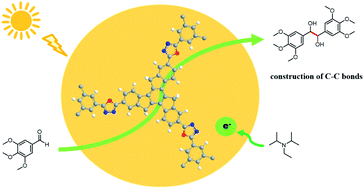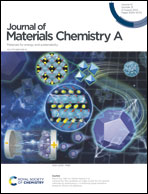Developing highly reducing conjugated porous polymer: a metal-free and recyclable approach with superior performance for pinacol C–C coupling under visible light†
Abstract
Porous organic polymers (POPs) have been shown to be an excellent and sustainable platform for photocatalysis. However, the development of an organic polymer photocatalyst with strong reducing capacity to drive organic transformations still lags far behind. Herein, a donor–acceptor–π (D–A–π) conjugated organic polymer (TX-OXD-P) is designed by introducing 1,3,4-oxadiazole (OXD) units into a truxene-based polymeric framework. The resulting polymer combines enhanced visible-light absorption, an improved charge separation process, and confined micropore environment. More intriguingly, TX-OXD-P exhibits high reducing power and is capable of catalysing pinacol C–C coupling in a metal-free and recyclable fashion. Remarkably, previously challenging carbonyl compounds with significantly negative reduction potentials could be accommodated under the catalysis of TX-OXD-P. The results indicate that structural modification at a molecular level holds a key point to unveil new photocatalytic performance of organic polymers.



 Please wait while we load your content...
Please wait while we load your content...